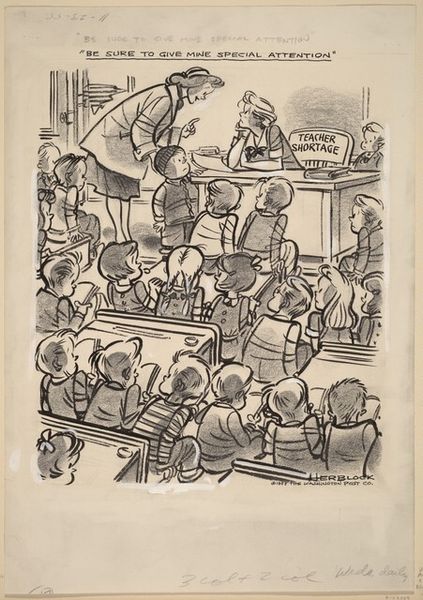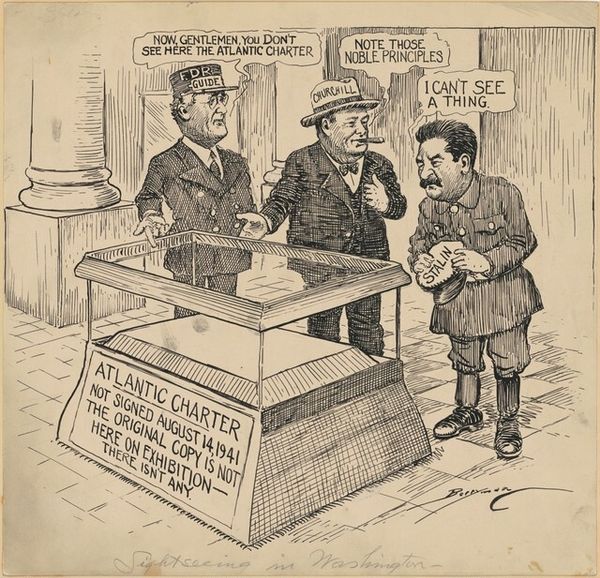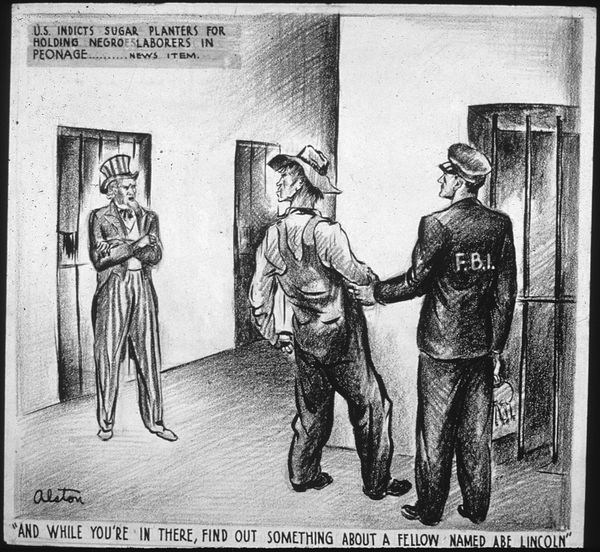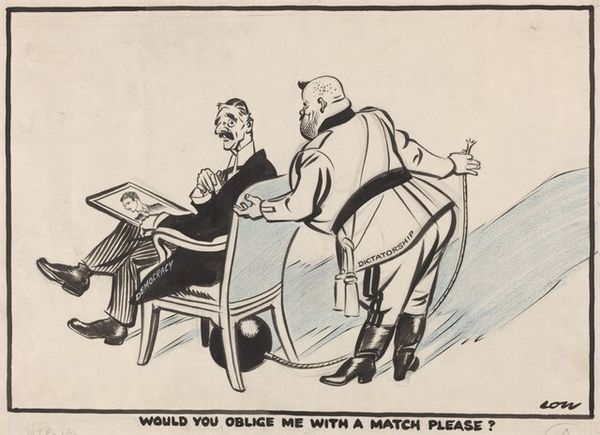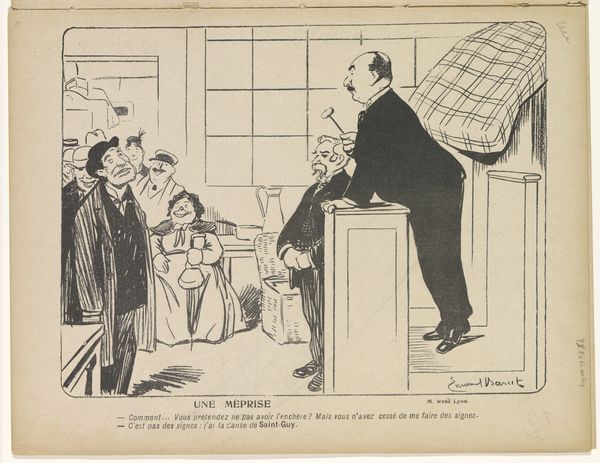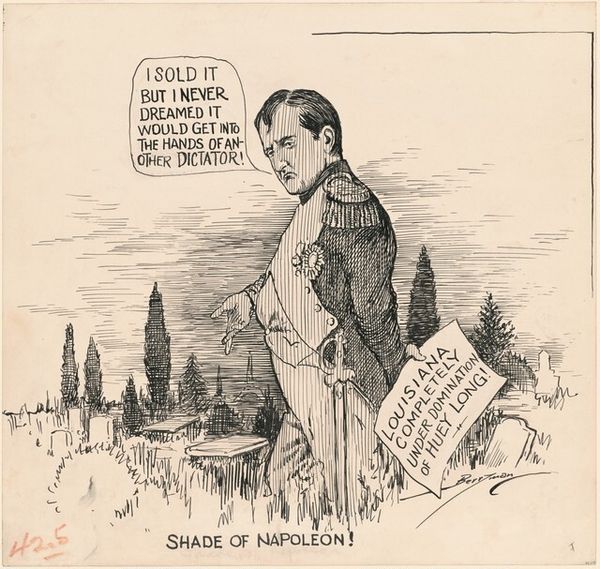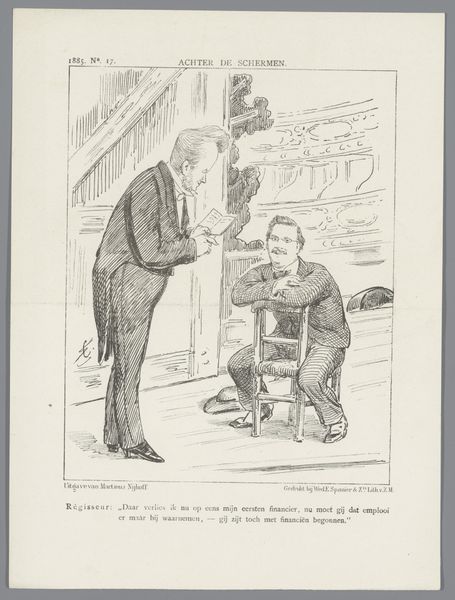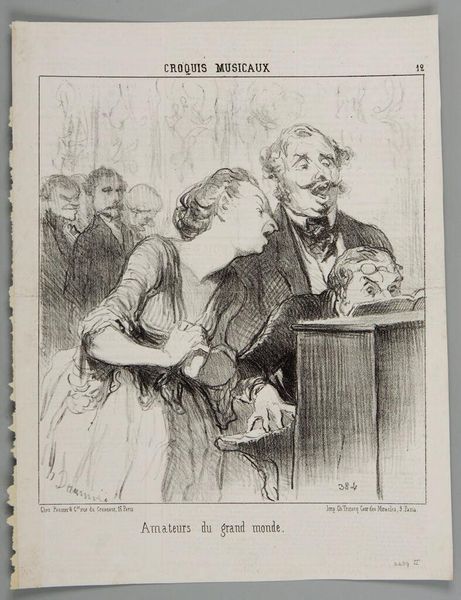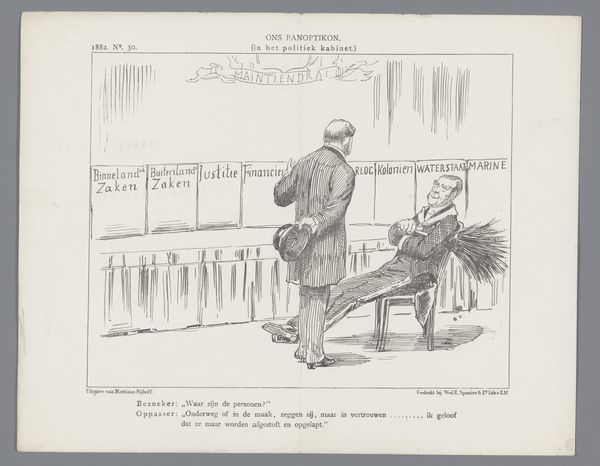
drawing, pencil, graphite
#
drawing
#
narrative-art
#
pencil
#
comic
#
graphite
#
comic style
#
history-painting
#
comic art
Copyright: Charles Alston,Fair Use
Curator: Well, look at this intense tableau. "A Second Emancipation Proclamation!!" It's a graphite drawing, probably on paper, created in 1943 by Charles Alston. Immediately striking, wouldn’t you say? Editor: I’m riveted by the way the subjects loom out from the backdrop. The greyscale hues enhance the mood: the ship and setting seem clouded in doubt as they set the scene for this supposed ‘second emancipation’—yet their expressions remain guarded. I wonder, does the composition propose an ironic overtone? Curator: Interesting you say that. What draws me in is the presence of Lincoln looming in the background like a specter. With the Atlantic Charter laid out, Alston is connecting Roosevelt and Churchill’s declaration of principles to the unfinished business of emancipation. Editor: Yes, this work uses a visual vocabulary familiar from political cartoons, simplifying figures and concepts for mass consumption. However, Alston is layering complexity with this phantom Lincoln. He suggests the continuous struggle against systemic oppressions, but how effective was the document, and what was its real purpose? What truly came of it? Curator: And that's what makes it so potent, even today. Alston gives us the optimism, but also a very tangible reminder that history casts a long shadow, one these two leaders can never truly escape, considering their complex attitudes to colonized peoples. I feel he is implying, where's the evidence of that supposed commitment? Editor: Exactly, it pushes beyond a simple portrait. It invites us to scrutinize the promises made during wartime, the lofty ideals versus the often-bitter realities, as this moment takes place in the middle of World War 2. Alston's placement of Lincoln also raises profound questions about legacies and accountability—as well as highlighting the limitations and possibilities inherent within political action itself. Curator: Ultimately, "A Second Emancipation Proclamation!!" leaves you pondering the gap between words and deeds. Alston has a subtle genius here. Editor: Precisely. The power of art lies in its ability to question, reflect, and challenge established narratives; it inspires me to further examine historical moments with critical insight and compassion.
Comments
No comments
Be the first to comment and join the conversation on the ultimate creative platform.
